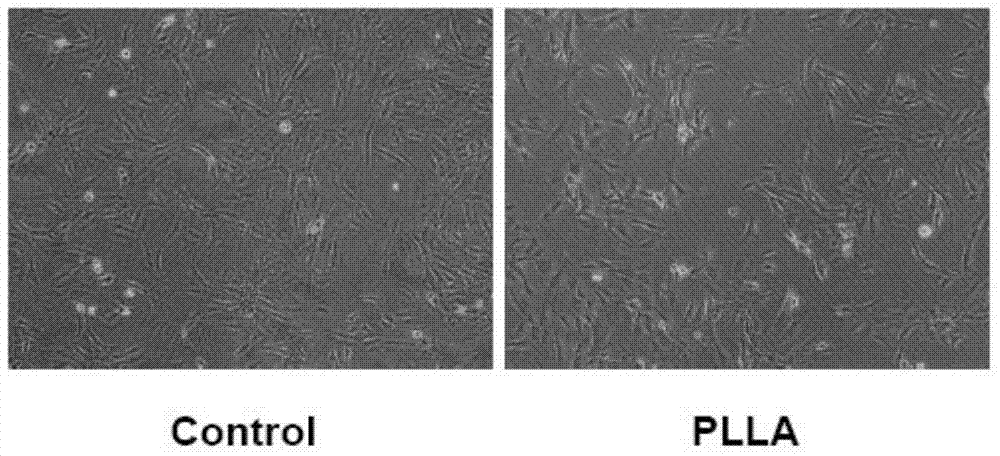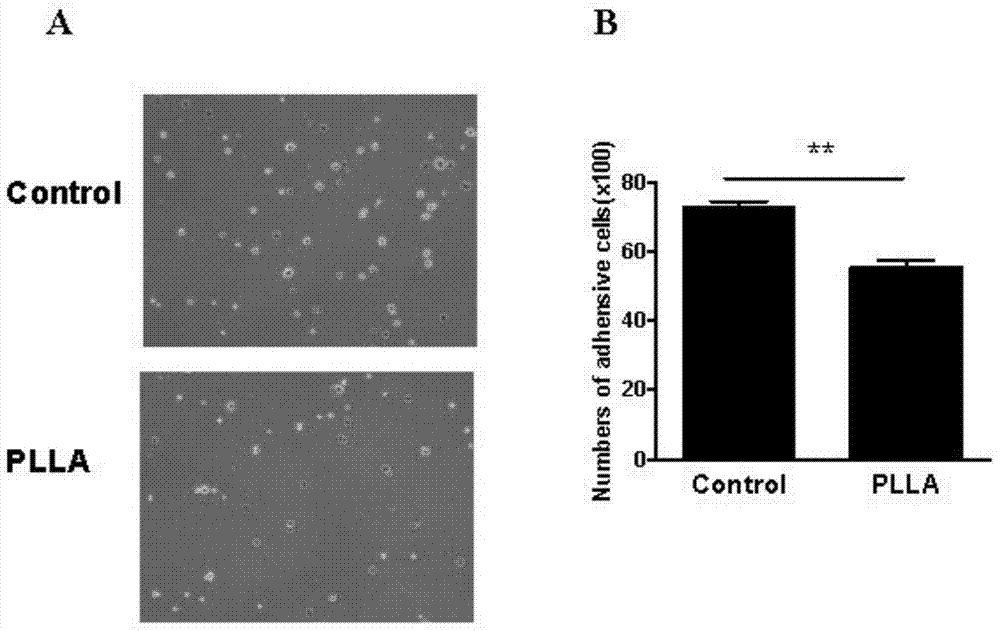Method for inhibiting late endothelial progenitor cell function
An endothelial progenitor cell and functional technology, applied in the field of simulating the prevention of infection or permanent adhesion after surgery, can solve the problem of short activity retention time of anti-adhesion membrane materials, achieve excellent physical and chemical properties, and prevent permanent adhesion. The effect of generating and reducing the formation of new blood vessels
- Summary
- Abstract
- Description
- Claims
- Application Information
AI Technical Summary
Problems solved by technology
Method used
Image
Examples
Embodiment 1
[0036] ① Isolation, culture and identification of rat bone marrow EPCs
[0037] Rat bone marrow mononuclear cells were separated by density gradient centrifugation, and the cells were resuspended in complete EGM-2 medium, inoculated into culture flasks primed with FN, and placed at 37°C containing 5% CO 2 (volume percent) in the incubator. The culture medium was changed after 4 days, and the medium was changed every 3 days thereafter. When the cells grew to about 80%, they were subcultured with 0.25% (weight percent) trypsin at a ratio of 1:1. The third-generation EPCs, that is, the late EPCs, were used as target cells. The cells were stained with Dil-ac-LDL and FITC-UEA-1, and the double staining was positive. Flow cytometry was used to detect VEGFR2, vWF, CD31, and VE-Cadherin, etc. Expression of endothelial cell markers.
PUM
 Login to View More
Login to View More Abstract
Description
Claims
Application Information
 Login to View More
Login to View More - R&D
- Intellectual Property
- Life Sciences
- Materials
- Tech Scout
- Unparalleled Data Quality
- Higher Quality Content
- 60% Fewer Hallucinations
Browse by: Latest US Patents, China's latest patents, Technical Efficacy Thesaurus, Application Domain, Technology Topic, Popular Technical Reports.
© 2025 PatSnap. All rights reserved.Legal|Privacy policy|Modern Slavery Act Transparency Statement|Sitemap|About US| Contact US: help@patsnap.com



